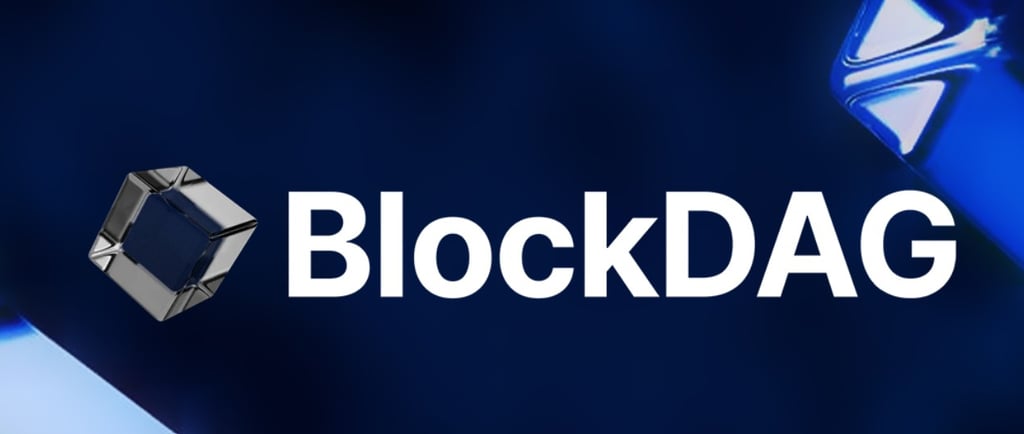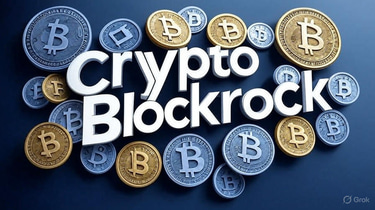BlockDAG: Redefining Blockchain with DAG Technology and Dual Ledger Models
Discover how BlockDAG is revolutionizing decentralized ledgers with a unique blend of UTXO and account models, scalable DAG architecture, and EVM compatibility. With $300M raised, 20+ exchange listings, and 2M users, BlockDAG is set to power the next generation of payments, DeFi, and smart contracts.
BLOG
7/1/20253 min read


🚀 BlockDAG: The Future of Decentralized Ledgers Is Already Here
The world of blockchain is evolving fast—and BlockDAG is charging ahead to define what the next generation of decentralized ledgers can be. With over $300 million raised, 20+ exchange listings locked in, and 2 million users already on the X1 mining app, BlockDAG isn’t just an idea—it’s becoming a reality that’s set to rival established networks like Filecoin, Tezos, and Polkadot.
In this article, we’ll break down what makes BlockDAG so innovative, including how it combines the best of UTXO and account models, why it moves beyond traditional chains into a DAG-based ledger, and what milestones are coming up next.
🌐 What Is BlockDAG?
BlockDAG is a next-generation decentralized ledger that merges high scalability, privacy, and smart contract capabilities in a single platform. Unlike earlier blockchains, which often force developers to pick between speed and programmability, BlockDAG is designed to give you the best of both worlds.
Here’s a quick snapshot of their momentum:
✅ $305M+ raised, surpassing many mid-cap crypto projects
✅ 20 exchanges launching, paving the way for liquidity
✅ X30 and X100 mining devices shipping this summer
✅ Mainnet scheduled for Q4 2025
✅ EVM compatibility for smooth Ethereum dApp migration
✅ Upcoming BDAG Debit Card and NFT support
🔄 UTXO vs. Account Models: Why BlockDAG Uses Both
Most decentralized ledgers fall into one of two camps:
UTXO Model (like Bitcoin):
Value is stored in discrete units called unspent transaction outputs. If you spend $5 from a $10 UTXO, you create a transaction with two outputs: $5 to the recipient and $5 back as change. This approach is highly scalable and improves privacy because each transaction can use new addresses.Account Model (like Ethereum):
Balances live inside accounts. Sending $5 simply moves it from your account balance to someone else’s. This model is more intuitive for smart contracts and dApps.
BlockDAG supports both systems. Its UTXO subsystem enables fast, private payments, while its EVM-compatible account model powers complex smart contracts and DeFi protocols. Developers can build applications that leverage whichever model best fits their use case—or combine both in the same ecosystem.
🔗 Traditional Chains vs. DAG Ledgers
Traditional blockchains arrange transactions in a single linear chain. While this design is easy to understand and secure, it often struggles with scalability, since every node must process every transaction in the same order.
DAG (Directed Acyclic Graph) ledgers work differently. They allow transactions to be partially ordered, so unrelated transactions can be processed in parallel. This means higher throughput and lower fees.
BlockDAG uses an advanced Phantom GhostDAG protocol to organize transactions. As the DAG grows, the protocol ensures a universally accepted order eventually emerges, blending the scalability of parallel processing with the finality of consensus.
🚀 What’s Coming Next for BlockDAG?
BlockDAG isn’t just theory—it has a detailed roadmap:
✅ X30 & X100 mining devices: Shipping this summer, bringing more users into the ecosystem.
✅ Mainnet launch: Testnet updates in July, with full mainnet rollout expected by Q4 2025.
✅ BDAG Debit Card: Enabling users to spend crypto seamlessly in daily life.
✅ NFT support: Full breakdown of conversion rates and tools coming soon.
✅ Wallet compatibility: Metamask, TrustWallet, and PlusWallet ready at launch.
✅ Certik audit: Vesting contracts already completed and audited.
With over 150,000 unique holders and growing, BlockDAG is positioning itself as a serious contender in the next wave of decentralized finance and scalable ledger technology.
🧭 Final Thoughts
If you’ve been watching the blockchain space evolve, you know that scalability, usability, and developer friendliness are make-or-break factors for any platform. By combining a DAG-based ledger with the dual power of UTXO and account models, BlockDAG aims to solve problems that have limited other networks.
Whether you’re a developer, investor, or crypto enthusiast, BlockDAG is worth keeping an eye on—and with presales already live and mainnet around the corner, now might be the time to get involved.
Learn more and Join the presale
🌐URL : https://blockdag.network/?utm_source=ppc1&utm_medium=meta&utm_campaign=conversion&utm_id=1
